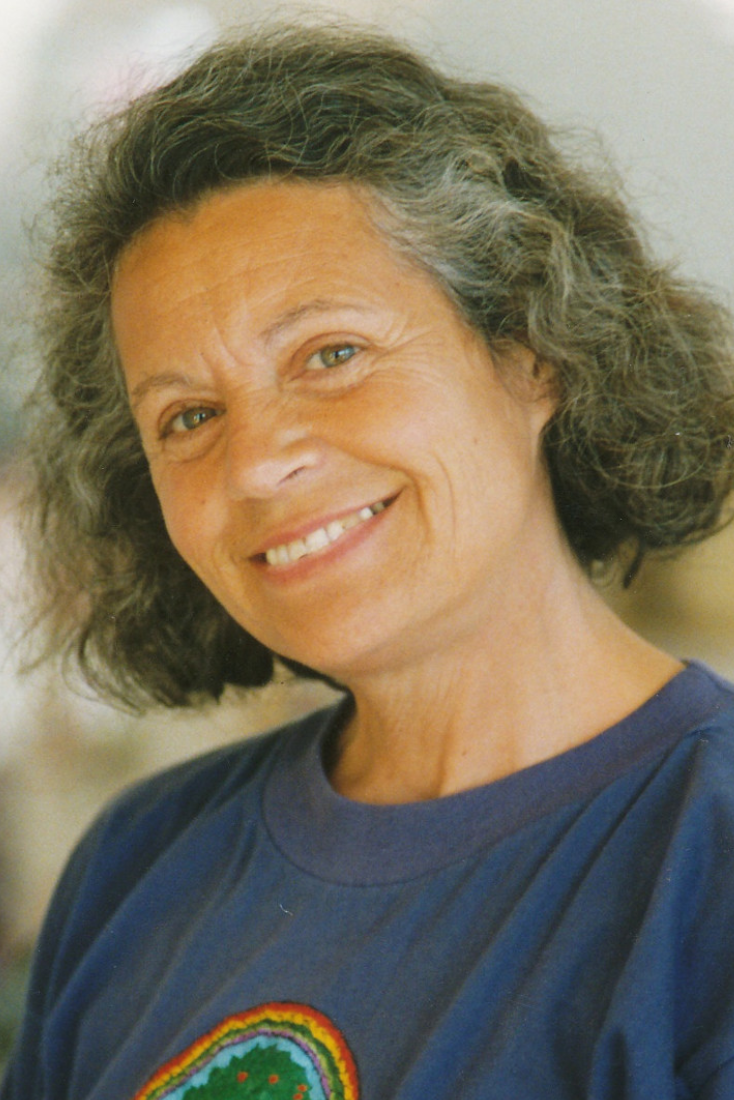Emilia Hazelip
Synergistic Gardening
Today is the birthday of the Spanish woman who pioneered a system of organic gardening known as synergistic gardening - Emilia Hazelip.
Emilia was born in Barcelona. As a young adult, she embraced communal living and was part of the hippie movement. She managed to make her way to California, where she worked on ecological farms. At the time, Ruth Stout's no-work gardening and Alan Chadwick's raised bed concept were gaining traction.
In 1977, Masanobu Fukuoka's ("MAH-SIN-oh-boo FOO-ku-OH-KAH") book, "The One-Straw Revolution" was translated into English. Emilia got a copy, read it, and immediately set about applying the principles in her own garden.
By the time Emilia started tinkering with Fukuoka's principles, she was 40 years old, and she had been gardening for about 17 years. The gardening system she devised became known as synergistic gardening, and it was a mashup of Fukuoka's ideas and elements of permaculture.
Emilia was the perfect person to come up with synergistic gardening; She was attuned to nature, and he questioned the effectiveness of human methods that altered natural systems.
YouTube has a great video of Emilia, showing how she creates an edible vegetable garden.
She says,
“The work of Fukuoka was the proof that my intuition was right, meaning that working the land is not necessary. However, when I started to reproduce it, the results I obtained were so poor that I quickly understood the need to modify and adapt his system to other cultural and climatic conditions; this is how it was born what I decided to call Synergic Agriculture”
Back in 2012, Monica Brandies wrote an excellent article on Emilia that was featured in the Tampa Tribune. Here are some highlights.
"I've watched [a DVD of The Synergistic Garden with Emilia Hazelip twice and learned some new ideas that Rosalind [Baker] is already using with success.
Hazelip [says] the following:
Don't worry about fertilizer. Don't disturb the soil any more than necessary - no tilling or digging, no stepping that compacts the soil. [This way,] the earthworms and microorganisms in the soil can work with multiplied efficiency. And instead of the soil wearing out as it does in modern agriculture, it gets better year by year.
Cut down on compost. Hazelip uses no compost except in potting soil in flats in the greenhouse.
Elevate beds. Hazelip's beds are elevated 10 to 30 inches by digging deeper paths and piling the soil upon beds that are 4 feet wide, so it's possible to reach the center without stepping in. Her paths are 20 inches wide.
Cover the soil with mulch. The beds are always covered with organic mulch straw in her case, leaves in mine. But I have sinned by leaving some soil bare. I will try never to do that again. Nature always keeps the soil covered. Hazelip pulls back the mulch to add seeds or transplants but pushes it back right away around the transplants... Hazelip removes spent plants by cutting them off just above ground level, so the roots stay in the ground very important. Then the part of the plant you don't eat is laid on top as additional mulch. Over the years, you need less and less mulch.
Use the weeds you pull. Weeds are pulled out by the roots and laid in the path until they are dead. Then they are added to the mulch. Obviously, she doesn't have any of the invasive vines we have here, but they are the only ones I will have to bag up and discard. At first, such beds need hand weeding as much as any beds, but as the years go by, they need less and less weeding.
Hazelip used a spoon to plant some of her transplants and a trowel for the ones that needed a larger hole, but that was the extent of her digging. I am now doing all this as much as possible. It is never too late to learn.”
This post was featured onThe Daily Gardener podcast:
helping gardeners find their roots,
one story at a time






